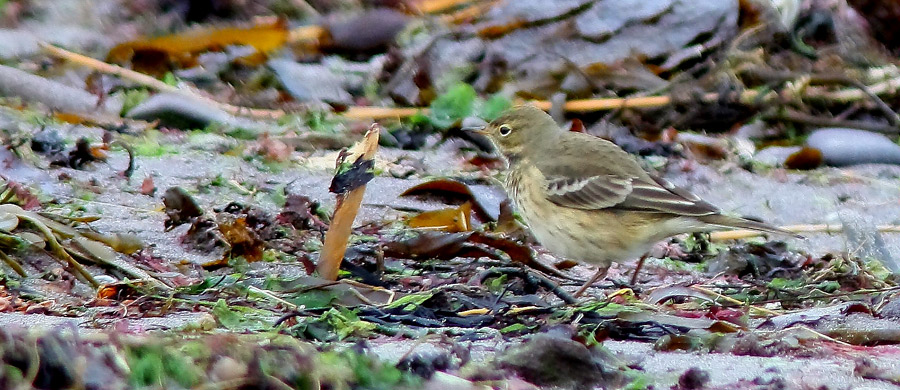Buff-bellied Pipit Anthus rubescens: review of 20th century records.

Buff-bellied Pipits Anthus rubescens of the North American rubescens group have recently become a more common sight in Western Europe in autumn, and have been recorded annually in Ireland since 2007. Nineteen individuals have been accepted as having occurred in Ireland to the end of 2013 (Fahy 2014). In addition to the autumn records, one bird successfully over-wintered at Redbarn Strand, Co. Cork from 25th November 2007 to 21st March 2008, and one discovered at Dungarvan, Co. Waterford on 22nd November remained to 20th December 2011. To what extent this increase is real, or how much is due to increased observer awareness of the species, is unclear, but with records now annual in Britain and with a number of other western European records in recent years, it must be assumed that at least some of the increase is real.
The recent run of occurrences in Ireland contrasts markedly with the status prior to 2007, with only two records accepted before then; singles at Great Saltee Island, Co. Wexford from 8th to 16th October 1951 and at Newcastle, Co. Wicklow on 19th October 1967 (Hutchinson 1989). Given advances in the field identification of these birds, formerly treated as conspecific with Rock Pipit Anthus petrosus and Water Pipit Anthus spinoletta and often referred to as American Water Pipit, the Irish Rare Birds Committee decided to review the Great Saltee Island and Newcastle records.
Great Saltee Island Record
This bird, found by P.W.P. Browne, was trapped on two occasions, and observed at length in the field by him and later by J. Weaving and R.F. Ruttledge. Despite the absence of in-hand photographs, let alone any photographs or sketches of it in the field, the features described accord well with those still used today to identify this species. The pattern of the tail feathers, with, in particular, a 20mm white wedge on the inner web of the penultimate pair (T5), is highly suggestive of rubescens. The underparts were described as buff, with finer, more defined streaking below than on nearby Rock Pipits, and the upperparts were browner and less streaked than those of Rock Pipit. The bill length (11.7mm) was shorter than that of spinoletta Water Pipit (12.8-14.3mm, based on four specimens checked at the National Museum, Dublin), but fell within the range of variation of rubescens (11.2-12.5mm based on four specimens checked at the National Museum), and the lores were pale. Field observations noted the bird's habit of almost constantly pumping its rear end, something which has been very obvious on many Buff-bellied Pipits found in Ireland in recent years, and the call, as transcribed, fits well with this species and clearly differs from the calls of either Rock or Water Pipits.
Due to the strong case set forward, it was decided by the Committee to retain the Great Saltee Island record as the first for Ireland. A more detailed description of the occurrence has already been published (Browne 1952).
Newcastle Record
Although the original description of this bird is not available to the Committee, this record was reviewed using the detail published in the 1967 Irish Bird Report (Ruttledge 1968). It was seen in good light at ranges down to 10 yards, but was not trapped, photographed or sketched. The description available to the Committee was, understandably under the circumstances, less detailed than that obtained of the Great Saltee Island bird, and many details recorded for that individual were not noted here, including the precise extent of white on the tail feathers and any vocalisations. While the buff underparts and dark legs may indeed have suggested a Buff-bellied Pipit, reference to 'striking buff lines on (the) back' gives cause for alarm. In addition, while the underparts were described as being 'very buff', there was also a 'pinkish tinge at times', and the breast was heavily streaked. It is possible that some of these features could have been described ambiguously; for example, the 'striking buff lines on (the) back' could have referred to the wingbars, and not barring on the mantle.
However, it was felt by the Committee that retention of the Newcastle record was unsafe. Accordingly, and with some regret, this occurrence is now considered not proven.
References
Browne, P.W.P. 1952. American Water-Pipit in Ireland. British Birds 45: 324-328.
Fahy, K. 2014. Irish Rare Bird Report 2013. Irish Birds 10: 71-102.
Hutchinson, C.D. 1989. Birds in Ireland. Poyser, Calton.
Ruttledge, R.F. 1968. Irish Bird Report 1967. Irish Ornithologists' Club, Dublin.
